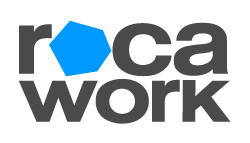OpenAI’s Bold Plan for 2025–2026: ChatGPT Won’t Just Be a Tool—It’ll Be Everything
ChatGPT isn’t just your friendly chatbot anymore. It’s evolving into something much bigger—the way we interact with everything. That’s not an exaggeration. According to a leaked internal memo from OpenAI, the company has massive ambitions for 2025 and 2026, and if even half of it becomes reality, the way we use technology is about to change forever.
So, what’s OpenAI actually planning? Is it just the next version of ChatGPT—or the start of a whole new digital ecosystem? Let’s break it down.
From Chatbot to Operating System
Right now, we know ChatGPT as a powerful assistant. You can chat with it, ask questions, write code, generate images, or even plan your next vacation. But this is only the surface.
According to the leaked strategy, OpenAI never really intended for ChatGPT to stay just a Software-as-a-Service (SaaS) platform. In fact, their long-term vision isn't a website or app you visit—it’s a complete operating system. One that interacts with everything in your life. The memo explicitly mentions that by 2026, they want to build a physical device, not just an app.
Let that sink in: a standalone device powered by AI that helps you manage your entire digital world.
ChatGPT as Your Interface to the Internet
Search engines, browsers, productivity apps—OpenAI sees all of them as stepping stones on the path to something more centralized and intelligent. Their goal? To make ChatGPT your interface to the internet itself. The memo literally says: “All human-computer interactions can be mediated by ChatGPT.”
Think of it this way: just as the web transformed how we shop, work, and socialize, OpenAI believes ChatGPT will become the middle layer between you and every other app, service, and tool. Need to book a restaurant? ChatGPT will call the API. Reschedule meetings? Done. Write emails? Handled.
Every app could become just a backend service. A pipe. The real interface—the real experience—will be through ChatGPT.
Why OpenAI Wants to Break Out of the Platform Box
So, why build a device? Why not just keep improving the app?
Simple. Because OpenAI fears being boxed in by the major tech players—Apple, Google, Microsoft. These companies own the platforms (iOS, Android, Windows), the stores (App Store, Play Store), and the hardware. At any moment, they could block, limit, or outcompete ChatGPT.
That’s why OpenAI is playing offense. The memo reveals they want to fight for “user choice experience.” They don’t want to depend on others’ platforms—they want to be the platform. Just like Apple owns the iPhone and App Store, OpenAI wants to control both the intelligence and the device it runs on.
What This Means for Developers, Startups, and You
Here’s where it gets real: if OpenAI succeeds, every app you build—or already use—will need to function as a service behind ChatGPT. APIs will become the default way apps are used. The front-end? It might not even matter anymore.
If you're a startup founder or developer, this raises urgent questions. Will your product survive in a world where ChatGPT handles the interface? Will your app still have a direct relationship with users—or will that bond be owned by OpenAI?
The answer depends on how well you adapt. If your service integrates well with AI systems, you might thrive. If not? You risk being invisible.
This also changes the way we think about AI adoption. It’s no longer just “using a chatbot.” It’s reimagining how we interact with digital tools entirely.
Conclusion
The leaked memo makes it clear—OpenAI is not just building a better chatbot. They’re building an ecosystem. A platform. Maybe even a competitor to iOS or Android.
They already have something incredibly valuable: 80% of the consumer mindshare around what “AI” even is. When people think of artificial intelligence, they don’t say “Google Gemini” or “Anthropic Claude.” They say ChatGPT.
But mindshare isn’t enough. If OpenAI stays confined to apps and websites, they’re at the mercy of platform giants. If they break free and build something bigger? We could be watching the birth of the next Apple or Google.
For now, one thing’s certain: this isn’t just about AI anymore. It’s about who controls the future of digital interaction.
Let’s get to know each other!
